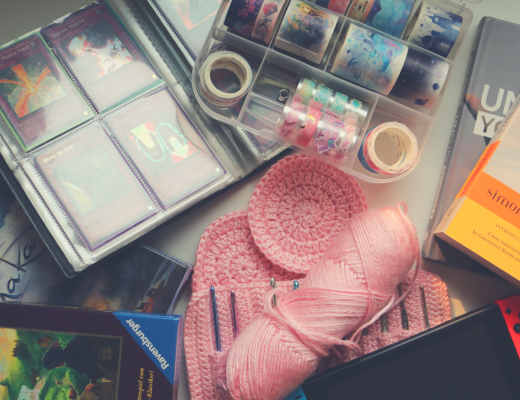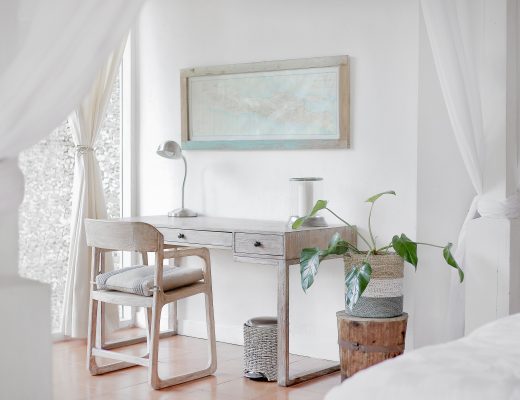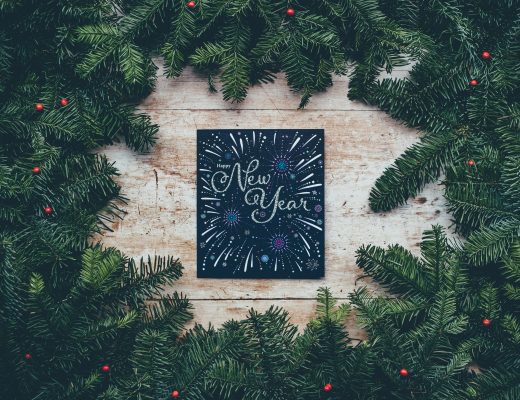A lot of people are finally starting to realize the benefits of simplifying their environment and their entire lifestyles, resulting in more people adopting minimalism. In focusing our efforts on our physical environment, we can often forget about our digital lives.
Part of it is because digital clutter can seem so easy to escape – you simply drag all the files from your overflowing desktop screen into a new folder and you can temporarily put the concern to rest. But, as the emails keep piling on, one on top of the other, and we keep running out of storage space, digital clutter becomes yet another stressor in the back of our minds.
One of the biggest benefits of minimalism is all the mental storage it frees up, leaving us with more time and energy to focus on the things that truly matter to us. Today, I want to talk about how you can make your life more efficient while also eliminating some unnecessary stress by sharing my digital decluttering routine.
Why Care?
The benefits of minimalism are honestly, amazingly transformative. Minimalism has the power to completely alter your outlook on life and help you hone in on your most precious values while simplifying your life so that you also have the time to dedicate to those values.
Every bit of clutter adds to our daily stress levels and the complexity of everyday tasks. It is up to each individual to assess the personal benefits to be gained from any minimalist endeavor, but personally, I find that keeping my digital space clear and clutter-free has helped eliminate unnecessary distractions which has in turn helped me increase my focus and productivity.
Starting Small – Your Phone
It’s a good idea to start with a device that’s seemingly small but probably more used than any other device you own- your smartphone.
Start off by going through your text messages and erasing all the messages that you no longer need. Personally, I like to save conversations that are work related that I may need to reference back to in the future. I also save screenshots of sentimental messages that I want to hold on to.
Anything aside from those gets deleted and even those conversations get deleted when they’re no longer relevant.
Next up, go through your browser tabs. It can be super easy to accumulate a ton of open browser tabs, so take a minute or two to quickly go through your browser tabs. Bookmark any pages that you want to reference in the future and then exit all of the open tabs.
Go through your photos and videos. Delete any photos that are blurry. Delete all photos and videos that no longer spark any joy for you.
If you use the notes and voice memos app on your phone, go through your memos and delete all irrelevant memos and go through all your voice recordings to check for any that you no longer need. I often make grocery lists or short-term meal plans on my phone and then forget to delete them after I’m done causing them to pile up. I also like to take this time to appropriately rename my voice memos so that I know exactly what each one is about.
Lastly, it’s time to attack your apps. Go through all your apps and delete any that you no longer use. Delete any apps that don’t align with your personal values. Also, take a minute or two to organize your apps in a way that suits you best – for example, one of my goals is to meditate more in 2019, so I’ve moved my meditation app to the first page so whenever I unlock my screen, I get a visual reminder to meditate.
That’s all for the phone unless you have more areas on your phone that I didn’t mention that you want to declutter.
Social Media
It’s no secret that social media can be highly addictive and also extremely time-consuming. Sometimes, we get stuck in the familiar routines of endless scrolling and we don’t even realize how much time we’re spending and why. Shining the light of minimalism on your social media accounts is a great way to inject some intentionality into your social media interactions as well as free up some extra time!
Start off by making a list of all your social media accounts – Twitter, Facebook, Reddit, Instagram, Snapchat, etc. If you have multiple accounts on one platform, make sure to list out each account separately. Then, go through them one by one and ask yourself the following questions:
- How often do I use this platform?
- Do I enjoy this platform?
- Does the kind content I scroll through add value to my life?
- Do I know all the people I’m friends with or follow on this platform?
These are a few of the questions I use to determine how to handle my social media accounts. Based on the responses, I may opt to completely delete a social media account (I did this with my Facebook account), or unfollow/unfriend people, groups, and pages that don’t add value to my life.
Email Accounts
There are two parts to this one. The first is the email accounts themselves, and then the second part is achieving “Inbox Zero” across all your accounts.
Let’s start off with part one: the email accounts. I don’t know about you, but it turns out I’m an email account freak because I literally had 10+ email accounts when I first made a list of all of them. Some were for failed business ideas from the past, while some were work-related, others were completely dormant and unused, and then of course there were the regularly used accounts.
After making a list of all my accounts, I divided them up into 4 categories: Can be deleted right away, import emails into another account and then delete account, phase out slowly, and finally, keep account.
Once that was done, it was easy to get started on minimizing the accounts. This is still a work in progress for me, but I’m proud to have deleted quite a few accounts that I no longer needed.
Next, move on to part two: Inbox Zero. This one can be fairly time consuming especially if you haven’t decluttered your inbox in years as was the case for me. However, it is SO worth it because once you achieve Inbox Zero, you’ll be motivated to maintain it and will have lovely clear inboxes at the end of each day as rewards!
A great starting point is unroll.me which gives you a great overview of all your current subscriptions and allows you to unsubscribe from the ones you don’t want with just a click, all from the same interface and for free.
Another tip is to sort your inbox by unread only and then go to town unsubscribing and deleting.
It’s also a great idea to use the labels function in your email account to categorize emails and stay organized.
Computer
Finally, you can move on to decluttering your computer. Start of with your desktop where many of us tend to accumulate a ton of files and folders. I like to go through every single file and delete any files that I no longer need. Next, I like to categorize the remaining files by type and move them to the appropriate folders. If you don’t already have a category system for your files, definitely invest some time with coming up with one that works for you.
Next, I like to move on to my external hard-drive and USBs and repeat the same process. It’s also a good idea to make sure you have a backup of all the files on your computer on your external hard-drive as well.
Often I have a lot of duplicate files on random USBs so I like to take this time to also get rid of unnecessary clutter on my USBs.
Make It a Regular Habit
I recently finished reading The 7 Habits of Highly Effective People by Stephen Covey which referenced Eisenhower’s Urgency/Importance Matrix and talked at length about spending more time doing “quadrant two activities” for a more efficient life.
If you’re not familiar with this principle, it’s basically a method of organizing priorities where you list your priorities and tasks under 4 different categories: Urgent and important (Q1), not urgent but important (Q2), urgent but not important (Q3), not urgent and not important (Q4). Most of us spend a lot of time devoted to activities in Q1 which are immediate crises such as sending out a critical email and tend to really neglect Q2 activities such as exercising and planning.
However, the activities that reap the most long-term rewards always fall under quadrant two and digital decluttering is one of those activities. It’s not urgent, but it’s important, so we put it off day after day while the laundry list of duties continues piling up. So, get in the habit of setting aside time for things that are important but not urgent just as you would set aside time for activities that are seemingly more urgent.
By making digital decluttering a regular part of your weekly or monthly routine, you’ll be surprised by how much your efficiency increases and furthermore, by staying on top it, you ensure that you don’t have to spend a large chunk of time redoing what you accomplished already before.
I hope my digital decluttering routine inspired you to tackle your own digital clutter and you got some useful tips out of this post! I’d love to hear your personal tips and experiences with digital clutter as well so leave them in the comments down below.







No Comments